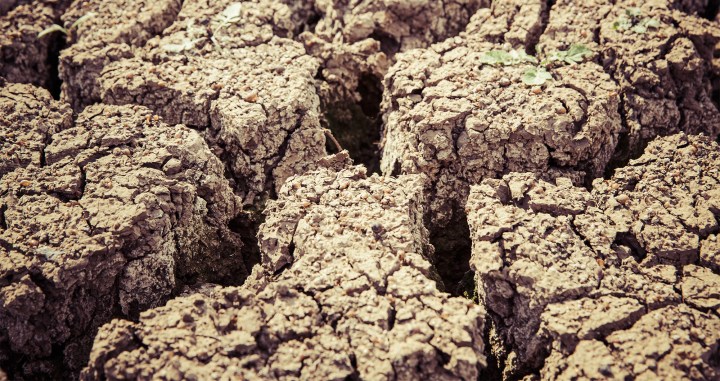BUSINESS MAVERICK: OP-ED
SA agriculture’s déjà vu moment, starring drought and animal disease

South Africa’s beef sector contributes about $140m in export revenues. At the time of writing, only Zimbabwe – a relatively small export destination — has implemented a ban on South African livestock products.
The South African agricultural sector is experiencing a déjà vu moment. The 2018/19 production season was grim, marred by drought for summer crops and foot-and-mouth disease. This time, it’s again the livestock’s turn as we recently learnt of another biosecurity case. To mitigate the adverse economic impact, the government and private sector must join forces to stimulate the sector, rather than let it tumble downwards.
The Department of Agriculture, Land Reform and Rural Development recently reported clinical signs of foot and mouth disease in a herd of cattle on a farm in the Molemole District of Limpopo. Events like this can trigger an import ban of South African livestock products – crippling the market in a way that affects much more than the Molemole District.
For example, the last ban had far-reaching ripple effects, extending to sectors such as wool, which, on average, contributes $308-million to the South African economy in export revenue. The last foot and mouth disease outbreak triggered China, which imports 71% of South Africa’s wool, to implement a multi-month ban.
Without intervention, the present outbreak can have significant implications. South Africa’s beef sector contributes about $140-million in export revenues. At the time of writing, only Zimbabwe – a relatively small export destination — has implemented a ban on South African livestock products. However, if the ban is extended by other countries, it would have a heavy impact on trade balances, which have hardly recovered from an outbreak earlier in 2019.
Given the scale of potential adverse economic effects, it is in the best interest of the government and private sector to step up veterinary extension services to ensure that the outbreak does not grow. In the medium term, improving the traceability of livestock and revival of the dipping system in the former homelands would create stronger preventative mechanisms.
Similarly, intervention is needed to support climate-resilient agriculture infrastructure and technology. The South African Weather Service forecasts lower than average rainfall between November 2019 and January 2020 in South Africa’s eastern regions, specifically parts of Limpopo, Mpumalanga and KwaZulu-Natal. To exacerbate the dryness, temperatures are also predicted to be higher than normal during this time frame. This has already contributed to reduced farming activity, due to delayed planting by many farmers in the region.
While it is difficult to quantify the exact impact these climatic changes will have on production and food prices, it is likely that the 2019/20 summer crop production will be lower than the initially forecast 7% y/y growth.
This comes on the back of lower-than-expected production during the 2018/19 season, also due to droughts. Maize, sunflower seed and soybeans production declined by 11% y/y, 21% y/y and 24% y/y, respectively. Fortunately, the country was buffered by high maize production during the 2017/208 season, which allowed South Africa to remain a net exporter. However, with consecutively weak production seasons, the buffer will be minimised in the 2020/21 marketing year.
Ultimately, sustained declined agricultural production has adverse impacts for both the government and private sector. In the immediate future, the government should revive the Section 7 Committee within the National Agricultural Marketing Council as an ongoing functioning body, rather than on an ad hoc basis. The Section 7 committee is a joint effort between the government and various farmer group organisations and is critical for assessing the impacts of natural disasters. It should play an integral role in the constant updating of response mechanisms.
In the medium to long term, investing in climate-resilient infrastructure, seed varieties that require reduced water intake, enhanced extension services support to enable farmers to develop practices to better handle climatic changes, among other mechanisms, is key to reducing the impact of exogenous shocks.
There’s no doubt it’s a difficult season for the agriculture sector. However, joint public-private efforts are central to addressing the challenges imposed by cattle disease and climatic changes and support the sector. BM
Wandile Sihlobo is chief economist of the Agricultural Business Chamber of South Africa. Gracelin Baskaran is a development economist, has consulted for the private sector, governments and multilateral development banks, and is completing a PhD at the University of Cambridge.

















 Become an Insider
Become an Insider